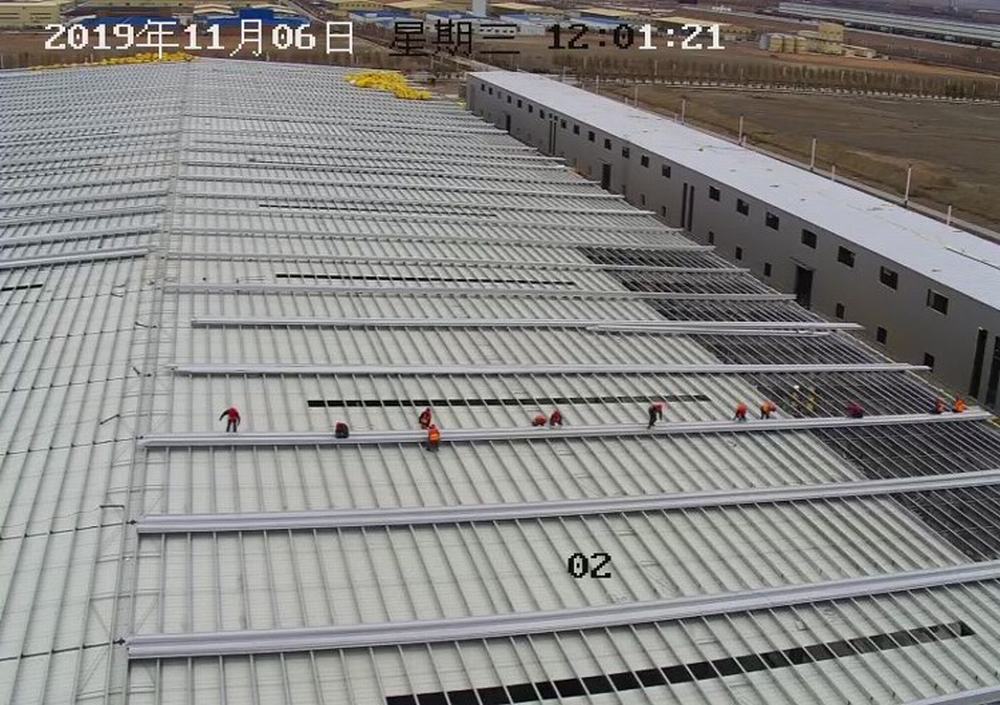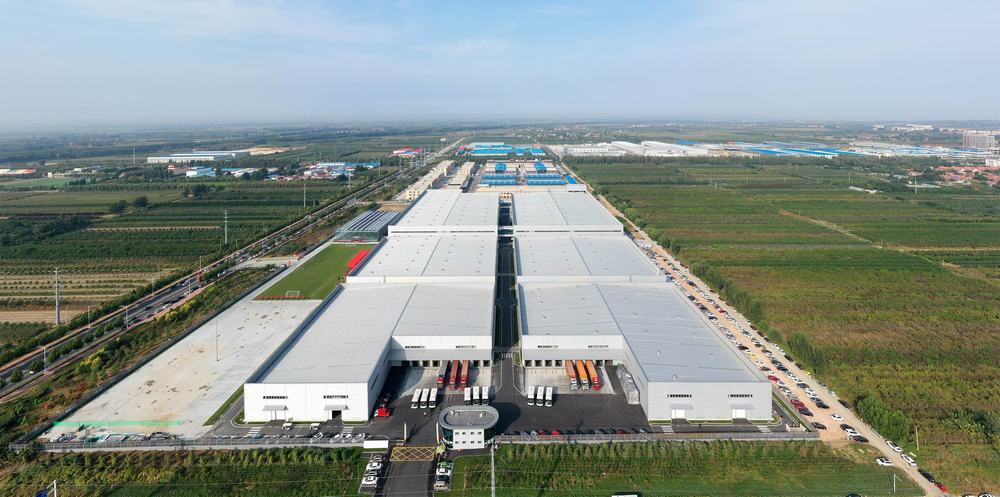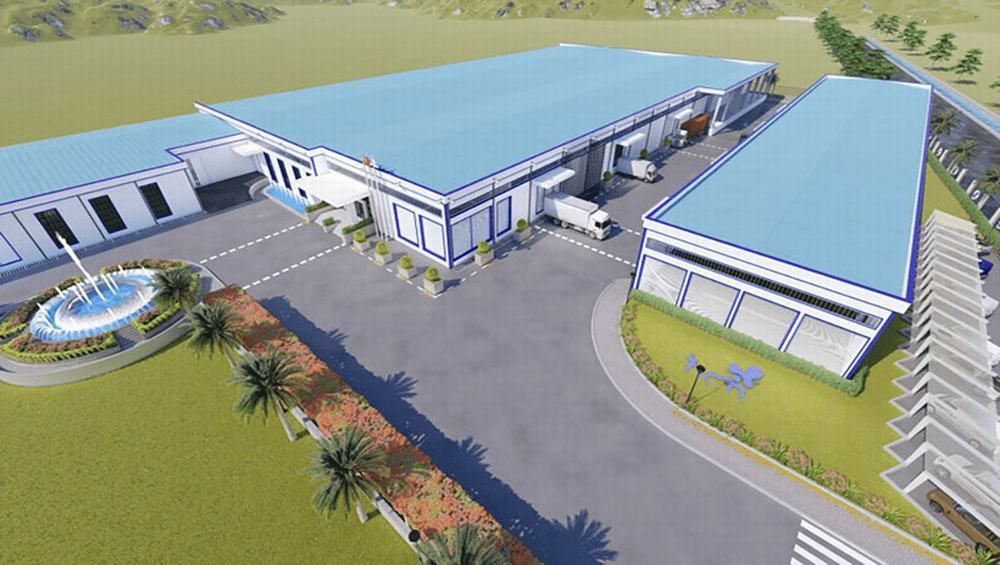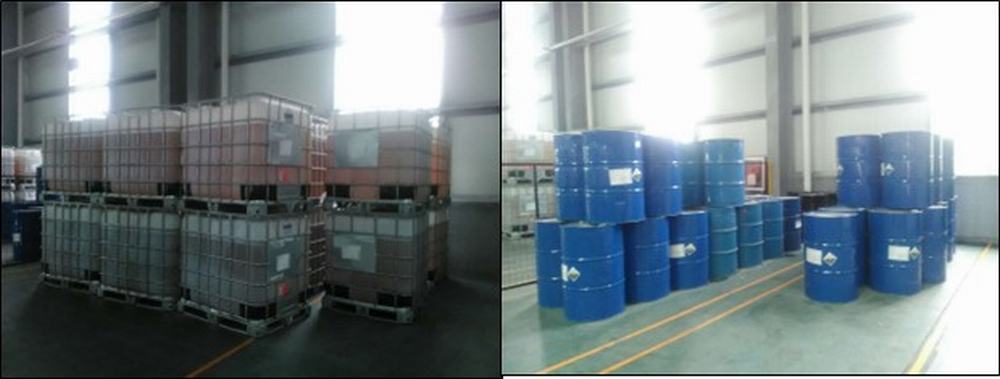Brand: WISBUILD
Product origin: Shandong, China
Delivery time: 30-40 days
Supply capacity: 20000 meters/month
If you are looking for the highest quality steel structure supplier, please contact us and our engineers will provide you with a professional quotation plan.
1 Insulation PU/PIR Sandwich Panels for Roofing Specification:
| Insulation PU/PIR Sandwich Panels for Roofing | ||
| Metal Sheet | PPGI steel sheet, PPGL steel sheet, Al-Mg-Mn sheet, Stainless steel sheet | |
| Thickness of Metal Sheet | 0.4mm-0.8mm | |
| Thickness of Panel | 50mm, 75mm, 100mm, 120mm, 150mm, 200mm, 250mm | |
| Effective Width of Panel | 1000mm | |
| Length of Panel | 500mm-11800mm (According to the client’s requirement) | |
| Color | White, Gray, Blue, Red or other RAL colors | |
| Coating | PE, HDP, SMP, PVDF | |
| Core Material | PU/PUR/PIR(Polyurethane) | PIR(Polyisocyanurate) |
| Fireproof Grade | B1, B2, B3 | B1 |
| Density | 38-40kg/m³ | 40-50kg/m³ |
| Thermal Conductivity (25ºC) | ≤0.026w/(m.k) | 0.017-0.022w/(m.k) |
| Closed Cell Rate | ≥99.8% | |
| Surface Profile | Flat, Small Waves, Ribbing | |
| Installation Method | Horizontal or Vertical | |
2 Production of Insulation PU/PIR Sandwich Panels for Roofing:
The raw materials used in insulation PU PIR sandwich panels for roofing play a crucial role in their performance. These panels typically consist of a core material made of polyurethane (PU) or polyisocyanurate (PIR) foam, sandwiched between two layers of metal sheets.
The foam core provides excellent thermal insulation properties, ensuring energy efficiency and climate control within buildings. PU and PIR foams are known for their high insulation value and lightweight characteristics, making them ideal for roofing applications.
The outer metal sheets offer structural support and protection against external elements such as weather and corrosion. They are commonly made of materials like steel or aluminum, chosen for their strength and durability.

The production lines for insulation PU/PIR sandwich panels for roofing are equipped with state-of-the-art machinery and technology. These lines efficiently manufacture sandwich panels by sandwiching the core insulation material between two metal sheets.
The process begins with the preparation of the core material, which is typically polyurethane (PU) or polyisocyanurate (PIR) foam. The foam is then fed into the production line where it is sandwiched between pre-coated metal sheets using high-pressure rollers.
Next, the panels go through a curing process to ensure proper bonding of the materials and structural integrity. Precision cutting and profiling machines shape the panels according to required dimensions.
Quality control measures are integrated throughout the production process to ensure consistency and adherence to industry standards. The finished panels are stacked and packaged for shipping to construction sites.
3 Installation Sites of Insulation PU/PIR Sandwich Panels for Roofing:

Installation sites of insulation PU/PIR sandwich panels for roofing vary widely, encompassing residential, commercial, and industrial buildings. These panels are commonly used in new construction projects and renovations to enhance energy efficiency and structural integrity.
Residential installations often involve single-family homes, apartment buildings, and condominiums. In commercial settings, offices, retail stores, and warehouses benefit from the insulation properties of these panels. Industrial facilities such as factories, warehouses, and cold storage units also utilize PU/PIR sandwich panels for their roofing needs.
Installations occur across diverse geographic locations, spanning urban, suburban, and rural areas. Regardless of the setting, the lightweight and easy-to-install nature of PU/PIR sandwich panels make them a preferred choice for roofing applications.
4 Insulation PU/PIR Sandwich Panels for Roofing Project Cases:


Installation Sites of Insulation PU/PIR Sandwich Panels for Roofing
In residential projects, PUPIR sandwich panels have been used to enhance energy efficiency and comfort in homes, ranging from small houses to large estates. Commercial buildings such as offices, schools, and shopping malls have also benefited from the installation of these panels, reducing heating and cooling costs.
Industrial facilities including warehouses, factories, and cold storage units have incorporated PUPIR sandwich panels for their roofing needs, ensuring temperature control and product integrity. Additionally, agricultural structures like barns and storage facilities have utilized these panels for durable and cost-effective roofing solutions.
The versatility and performance of insulation PUPIR sandwich panels make them a preferred choice for roofing projects across various sectors. Their proven track record in numerous successful cases highlights their reliability and effectiveness in enhancing building performance.
5 Insulation PU/PIR Sandwich Panels for Roofing Q&As:
1. Q: What are insulation PU/PIR sandwich panels for roofing made of?
A: Insulation PU/PIR sandwich panels for roofing consist of a rigid foam insulation core, typically made of polyurethane (PU) or polyisocyanurate (PIR), sandwiched between two metal facings, such as steel or aluminum.
2. Q: What are the main advantages of using these panels for roofing?
A: The main advantages include excellent thermal insulation properties, lightweight yet durable construction, ease of installation, and long-lasting weather resistance, making them ideal for energy-efficient and low-maintenance roofing solutions.
3. Q: What types of buildings are these insulation panels suitable for?
A: These insulation PU/PIR sandwich panels are suitable for various building types, including industrial facilities, commercial buildings, residential structures, and other projects where energy efficiency, thermal comfort, and durability are essential requirements.
4. Q: How do these panels contribute to energy efficiency?
A: The insulation core of these panels provides excellent thermal insulation, minimizing heat transfer and reducing energy consumption for heating and cooling, thereby contributing to overall energy efficiency in buildings.
5. Q: Are these panels easy to install and maintain?
A: Yes, these insulation PU/PIR sandwich panels are designed for easy installation, with lightweight and modular construction, and require minimal maintenance over their long lifespan due to their durable and weather-resistant nature.












